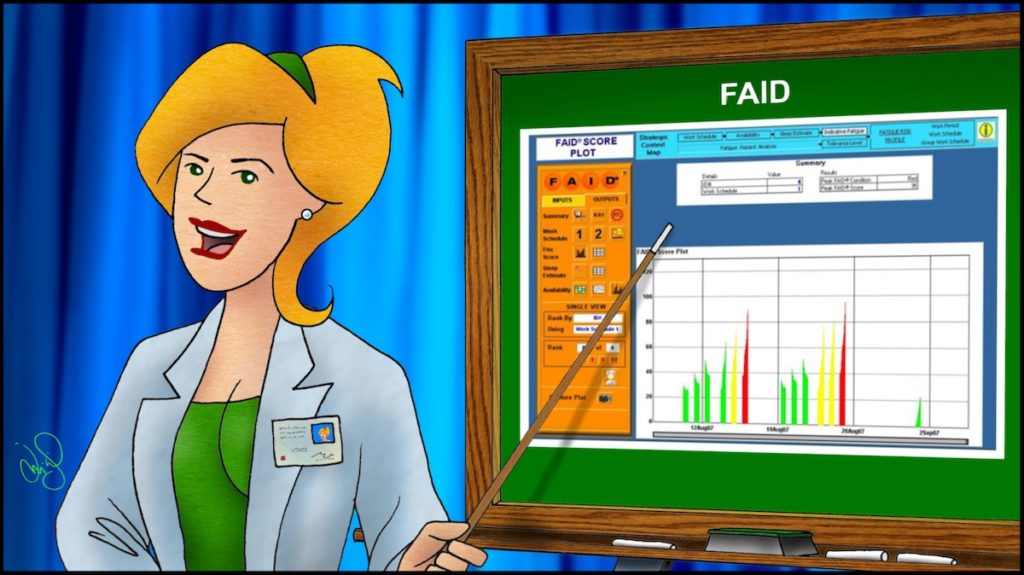Fatigue modeling is one of the subjects PHMSA mentions that fatigue training should cover. Wouldn’t it be great to know exactly what time you are going to be fatigued? I cannot tell you exactly, but I can use fatigue modeling software to show when the potential risks of fatigue are higher during a shift. As you suspect, those times are higher on night shifts than on day shifts. The potential fatigue risks increase the more shifts one works in a row. Here is what Interdynamics, the FAID® software provider, states about the software on its website Interdynamics:
FAID®, our Fatigue Assessment Tool, is a family of scientifically supported modeling solutions that assess the risks of hours of work related employee fatigue. It is suitable for use in any number of industries where shift work poses potential problems.
FAID® is designed primarily to assist individuals or administrators with:
- Managing roster plans and comparing different potential work patterns
- Understanding the fatigue exposure impacts of various start and finish times
- Allocating appropriate overtime in conjunction with other risk-based controls
- Ensuring compliance of actual and planned rosters against fatigue tolerance levels
- Estimating changes to fatigue exposure based on the hours worked
I have been using FAID® for about 15 years since I first heard about it at a human factors conference. I downloaded an evaluation copy of the software and found it easier to use than some other fatigue modeling software that I tried and because I only have to know the hours worked on a schedule. You can download an evaluation copy of the software at the Interdynamics software or contact me for information.
Our consultants use FAID® for evaluating shift schedules for potential fatigue risk, showing Controllers times during shifts when they are most likely to be fatigued, as part of fatigue hazard analysis, for quantifying the potential contribution of fatigue in incidents, for comparing one shift schedule to another, and for building FAID® scenarios for clients based on different overtime situations.
There are about a dozen pipeline control room organizations that use FAID® as part of their fatigue risk management systems. Here are some ways they are using FAID®:
- Initial work schedule evaluation and any changes related to trading
of shifts. - To ensure employees are given ample intervals of rest in between shifts and that they are made aware of certain times of their shifts where fatigue would be most prevalent.
- We have built an Excel spreadsheet with the FAID® results that has almost every deviation of overtime possible.
- Quantifying the potential contribution of fatigue in incident analysis of operating errors and near misses.
- Tracking compliance with CRM requirements, ensuring fatigue score for individuals and the group doesn’t drop out of the acceptable range. This is accomplished by analyzing weekly FAID®
- Tracking hours of service; monthly forecast to prepare Controllers for potential fatigue; identifying who is available for callouts or extra work; record keeping for CRM purposes.




